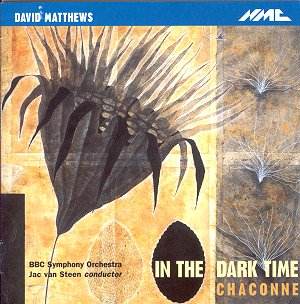 Composer: Malcolm Arnold
Composer: Malcolm Arnold
Works: The Nine Symphonies (1949-1986)
Performers: National Symphony Orchestra of Ireland, Andrew Penny (conductor)
Recording: April 1995-February 2000, National Concert Hall, Dublin, Ireland (in presence of composer)
Label: NAXOS
Malcolm Arnold, a composer whose work oscillates between exuberance and existential contemplation, emerges as a significant figure in 20th-century British music. His nine symphonies, spanning from 1949 to 1986, encapsulate a diversity of emotional landscapes and stylistic contrasts. This NAXOS box set provides a comprehensive survey of his symphonic output, presenting the works under the baton of Andrew Penny, whose interpretations have been pivotal in bringing Arnold’s unique voice to a broader audience. The timing of this release resonates with an increasing recognition of Arnold’s contributions to the symphonic repertoire, particularly as his music reflects both the turbulence of the 20th century and the rich cultural tapestry of post-war Britain.
The performances in this collection are marked by Penny’s insightful direction, which deftly navigates the intricate interplay of light and shadow that characterizes Arnold’s symphonic language. Each symphony is a distinct world, yet they are unified by a distinctive tonal palette and thematic material that recur throughout Arnold’s oeuvre. For instance, Symphony No. 5, often heralded as a masterpiece, showcases Arnold’s ability to blend virtuosic orchestration with deep emotional undercurrents. The first movement, with its driving rhythms and vibrant orchestral colors, is a testament to Arnold’s skill in crafting compelling narratives through music. Penny’s handling of the orchestral texture allows the brass and woodwinds to shine, delivering the work’s inherent exuberance while also revealing the underlying pathos.
The recording quality of this set stands out, capturing the nuances of the National Symphony Orchestra of Ireland with commendable clarity and warmth. The engineering choices favor a slightly closer microphone placement, which brings the listener into the heart of the orchestral sound, allowing for a vivid appreciation of Arnold’s chromatic intricacies and rhythmic vitality. This contrasts with some earlier recordings of Arnold’s symphonies, which often leaned towards a more distant soundstage, thereby losing some of the intimate details in the orchestration. In particular, the dynamic range in Symphony No. 6 is expertly rendered, from the hushed introspection of its opening to the climactic outbursts that define its character.
Penny’s interpretations resonate particularly well in the Seventh Symphony, where the macabre elements of Arnold’s style are juxtaposed with moments of lyrical beauty. The movement’s use of a fractured music-box ragtime theme evokes a sense of nostalgia and unease, underscoring Arnold’s complex relationship with memory and identity. This performance captures the duality of the work, balancing the grotesque with the poignant, akin to the theatricality of Bernstein, whom Arnold could be considered a kindred spirit to, particularly in their shared Mahlerian influences. The Eighth Symphony, with its “Sankey-style marching hymn,” is another highlight of this collection, revealing Penny’s adeptness in navigating the symphony’s shifting emotional terrain, punctuated by moments of despair and fleeting hope.
Comparisons with other notable recordings, such as Chandos’s cycle under conductors like Richard Hickox and Rumon Gamba, reveal the strengths and nuances of Penny’s approach. While Chandos’s recordings are celebrated for their lush warmth, Penny’s interpretations bring a sharper focus to the structural clarity and rhythmic vitality inherent in Arnold’s music, offering a fresh perspective that may attract both seasoned listeners and newcomers to Arnold’s symphonic landscape.
This NAXOS box set is not merely a compilation of recordings; it is a thoughtful presentation of Arnold’s symphonic journey that invites listeners to explore the depth and complexity of his musical language. The careful sequencing of the symphonies, alongside the insightful notes provided, creates a narrative that enriches the listening experience. The orchestral performance, coupled with the high-quality recording, ensures that Arnold’s music is both accessible and engaging. This collection stands as a definitive resource for anyone looking to understand the breadth of Arnold’s symphonic achievements, and it underscores the composer’s relevance in the contemporary classical canon.



